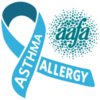Sensitivity to Birch Trees is one thing, but to say this may bring
food allergies is a whole new area to investigate!! Tree pollen
sensitivity can extend to food allergies with raw fruit and
vegetables. This mild form of food allergy is known as Oral
Allergy Syndrome. It can cause sneezing, sensitivity and
tingling in the mouth and lips. Some people are able to eat
these foods if they are cooked or the skin is removed. More
serious reactions require a visit to the doctor to see if treatment
is needed.

Can Birch Trees Trigger Food Allergies?

AAFA COMMUNITY SERVICES 3/8/182:05 PM
Birch trees are known for their tall, thin trunks and white bark. But did you know they trigger a lot of allergy symptoms for much of the population each spring? These allergy symptoms can range from nasal symptoms, like sneezing and a stuffy nose, to the lesser-known oral allergy syndrome (OAS).
What Is OAS?
If you have a pollen allergy, you could have OAS. It is a mild form of food allergy.1 With OAS, your mouth and throat may itch or tingle right after you eat certain raw fruits, vegetables, seeds or nuts. You might even get hives where the food touched your skin or swelling of your mouth, lips, tongue and throat. Many people with OAS can eat the foods that cause reactions if they are cooked or if the skin is removed.
It might seem strange that you would react to some foods because of an airborne tree pollen. This happens when your immune system gets confused. The pollen is similar to the proteins in some foods, so your body can’t tell the difference. So if you are allergic to birch pollen, your body might think it’s invading your body when you eat an apple. This is called cross-reactivity.
What’s the Difference Between OAS and Anaphylaxis?
The symptoms of OAS sound similar to anaphylaxis. So how do you know the difference?
Anaphylaxis (anna-fih-LACK-sis) is a severe reaction that comes on quickly and usually affects more than one organ system (part of the body), such as the skin or mouth, the lungs, the heart and the gut. It requires epinephrine and immediate medical attention. Some symptoms include:
- Skin rashes, itching or hives
- Swelling of the lips, tongue or throat
- Shortness of breath, trouble breathing or wheezing (whistling sound during breathing)
- Dizziness and/or fainting
- Stomach pain, bloating, vomiting or diarrhea
- Uterine cramps
- Feeling like something awful is about to happen
OAS is milder and often only affects the mouth. It can come on immediately when eating the offending food and go away quickly after eating the food.
But call your doctor if your OAS:
- Gets worse
- Happens when you eat nuts or cooked fruits and vegetables
- Trigger any of the above symptoms of anaphylaxis
What Foods Could I React to If I Have a Birch Pollen Allergy?
If you are allergic to birch pollen, there are several foods you could react to. But you may not react to every food on the list. Here are foods that cross-react with a birch pollen allergy:
- Almond
- Apple
- Apricot
- Carrot
- Celery
- Cherry
- Hazelnut
- Kiwi
- Parsley
- Peach
- Peanut
- Pear
- Plum
- Soybean
If you do not have symptoms when eating birch-related fruits and vegetables, you may continue to eat them as tolerated. If you have severe OAS symptoms, you should discuss this with an allergist. You’ll want to avoid eating the foods that trigger them, especially when birch pollen is high. Birch trees release their pollen between January to April, depending on where they grow. And birch trees grow throughout most of the United States, so they are hard to avoid.
If you have a reaction to almonds, hazelnuts or peanuts, you might have more serious symptoms. These nuts can cause anaphylaxis, a serious, life-threatening reaction. If you have symptoms when eating these nuts, talk to your doctor right away.
Birch trees are not the only plants that can trigger OAS. If you have symptoms of OAS, your doctor can perform tests to diagnose your pollen allergies so OAS won’t leave you guessing.
Medical Review February 2018


Leave A Comment